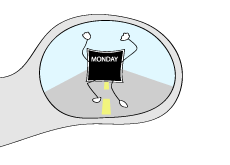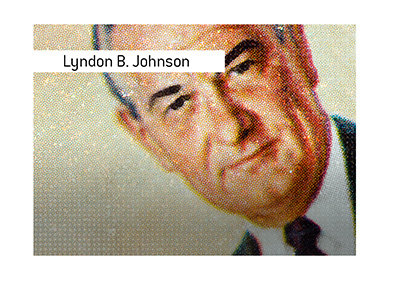October 19th, 1987 Was "Black Monday"
 On October 19th, 1987, the Dow Jones Industrial Average fell by an unbelievable 22.61%.
On October 19th, 1987, the Dow Jones Industrial Average fell by an unbelievable 22.61%. Over the 23 years since "Black Monday" took place, the Dow Jones Industrial Average hasn't even come CLOSE to falling that much in one day. Even in the darkest hours of the financial meltdown of 2008, the DJIA (Dow Jones Industrial Average) didn't finish down more than 10% in any one session.
Imagine coming home from work today and seeing that the Dow had fallen 2,498.4 points? That's precisely what happened (in percentage terms anyways) in 1987.
The NASDAQ and S&P 500 didn't escape the carnage that day either, though their losses were less severe. The NASDAQ closed down 11.35% on "Black Monday" (which is still the worst single day percentage decline in its history), while the S&P 500 closed down 20.47% (by far its worst day, easily topping the 9.03% decline experienced on October 15th, 2008).
The crazy thing about "Black Monday" is that hardly anybody saw it coming. It wasn't like the financial meltdown of 2008 when everybody knew that the system was coming apart at the seams - instead, this was a stinging slap in the face by the markets that took nearly everybody by surprise.
"Black Monday" spread like a virus on Monday, October 19th, 1987, starting in Hong Kong and quickly spreading to Europe and the United States. The carnage was bad on Wall Street, but it was even worse in other regions of the world. The UK markets fell by over 26%. New Zealand's markets fell by about 60%. Australia dropped by over 40%.
The entire planet was sucker-punched by the markets, and panic quickly spread. Media outlets jumped on the story, leading to even more worry and nervousness.
What caused the crash? There is really no consensus on the cause. Some blame program trading, some blame a lack of liquidity in the markets (at the time), while others blame "macroeconomic causes" such as disputes over foreign exchange and interest rates.
Whatever the cause, one thing was certain - trillions of dollars of market capitalization had just been evaporated over the course of one short trading session.
Many economists nervously fretted that "Black Monday" was going to lead to darker days for the global economy, and some even came to the conclusion that the massive collapse on October 19th, 1987 was the beginning of a second "Great Depression". The economy's recovery, they said, was about to come to a screeching halt.
Little did they know that the DJIA would actually end the year in green territory (+2.26%). Little did they know that the economy would continue to grow over the coming years (1988 and 1989). Little did they know that the United States would be beginning an unprecedented "boom" cycle just a few short years after their pessimistic words were shared to the world.
In the end, "Black Monday" was really just a glitch in the Matrix. The markets were able to significantly pare their losses in just a couple of days, and within a few months, "Black Monday" was just an ugly memory that was quickly disappearing in the rearview mirror.
Source: Davemanuel.com - Dow Jones Historical Data
Filed under: General Knowledge



